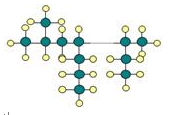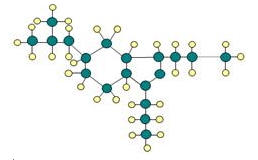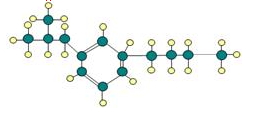Ingredients and properties of base oil
Base oils used to produce lubricants mostly (more than 90%) consist of mineral oils refined from petroleum fraction, and include synthetic oils suitable for each use only when mineral oils are insufficient to meet the performance.

Heavy crude oil fraction is suitable for lubricants because its chemical structure satisfies the basic properties of lube base oils such as viscosity and fluidity.
Crude oil is a mixture of various compounds with the majority of hydrocarbons. Yet, it is basically classified into paraffin hydrocarbons, naphthene hydrocarbons, and aromatic hydrocarbons as shown in Figure below. They have different molecular weights and carbon numbers according to the boiling point.
Paraffin hydrocarbons

iso-Paraffin

Naphthene hydrocarbons

Aromatic hydrocarbons

The basic property of base oils is viscosity, but it is determined depends on molecular weight and by distillation out of a refining process.
The mean molecular weight of base oils such as 150N (SAE 10), 500N (SAE 30), and 150 BS is 400, 500, and 700, respectively.
However for the same mean molecular weight-viscosity, the width of molecular weight distribution varies depending on the level of the boiling point. Specifically, the base oils with wide molecular weight distribution have low flash point and high evaporability (generally the NOACK value is high).
Viscosity Index (VI) vital to base oils is a measure for the change of viscosity with variations in temperature, but it is affected by the size (ratio) of a straight-chain structure of paraffin ingredients.
The ingredients with the highest VI are n-Paraffin hydrocarbons, but those over C20 are solid at room temperature and hardly included in de-waxed base oils.
Lubricant fraction includes Hetero Cyclic Compound* containing sulfur (S), nitrogen (N), and oxygen (O) although it varies depending on crude oil, which affects the properties in various ways.
(Note) *Polar compounds such as nitrogen compound and oxygen compound which are substituted with other elements including S, N, O and Metal.
Metal in the place of carbon are eliminated through a refining process (generally during the desulfurization) since they not only have a bad influence on the surface chemical properties such as demulsibility and vesiculation even in the presence of very small amount, but also cause discoloration, effluvium, and a declined in stability.
Aromatic compounds act as a natural antioxidant and base oils having the “optimal percentage of aromatic compounds” is known for outstanding oxidation stability. However in this case, it should be noted that sulfur compounds are contained in aromatic base oils.
Solvent refining is performed under the conditions with this optimal percentage of aromatic compounds considered. But if a synthetic antioxidant is used, it is better to use base oils with little aromatic compounds and hydrogenization is a suitable refining method.
Also aromatic compounds are effective in improving the resolving capability of base oils, therefore the base oils containing a lot of aromatic compounds are used in process oils, electrical insulating oils, and compressor oils despite different purposes.
- Pre.
- There is no previous post.
- Next
- Relation between base oils’ viscosity and temperature










